Intel's Haswell Architecture Analyzed: Building a New PC and a New Intel
by Anand Lal Shimpi on October 5, 2012 2:45 AM ESTPlatform Retargeting
Since the introduction of Conroe/Merom back in 2006 Intel has been prioritizing notebooks for the majority of its processor designs. The TDP target for these architectures was set around 35 - 45W. Higher and lower TDPs were hit by binning and scaling voltage. The rule of thumb is a single architecture can efficiently cover an order of magnitude of TDPs. In the case of these architectures we saw them scale all the way up to 130W and all the way down to 17W.

In the middle of 2011 Intel announced its Ultrabook initiative, and at the same time mentioned that Haswell would shift Intel's notebook design target from 35 - 45W down to 10 - 20W.
At the time I didn't think too much about the new design target, but everything makes a lot more sense now. This isn't a "simple" architectural shift, it's a complete rethinking of how Intel approaches platform design. More importantly than Haswell's 10 - 20W design point, is the new expanded SoC design target. I'll get to the second part shortly.
Platform Power
There will be four client focused categories of Haswell, and I can only talk about three of them now. There are the standard voltage desktop parts, the mobile parts and the ultra-mobile parts: Haswell, Haswell M and Haswell U. There's a fourth category of Haswell that may happen but a lot is still up in the air on that line.
Of the three that Intel is talking about now, the first two (Haswell/Haswell M) don't do anything revolutionary on the platform power side. Intel is promising around a 20% reduction in platform power compared to Sandy Bridge, but not the order of magnitude improvement it promised at IDF. These platforms are still two-chip solutions with the SoC and a secondary IO chip similar to what we have today with Ivy Bridge + PCH.
It's the Haswell U/ULT parts that brings about the dramatic change. These will be a single chip solution, with part of the voltage regulation typically found on motherboards moved onto the chip's package instead. There will still be some VR components on the motherboard as far as I can tell, it's the specifics that are lacking at this point (which seems to be much of the theme of this year's IDF).
Seven years ago Intel first demonstrated working silicon with an on-chip North Bridge (now commonplace) and on-package CMOS voltage regulation:
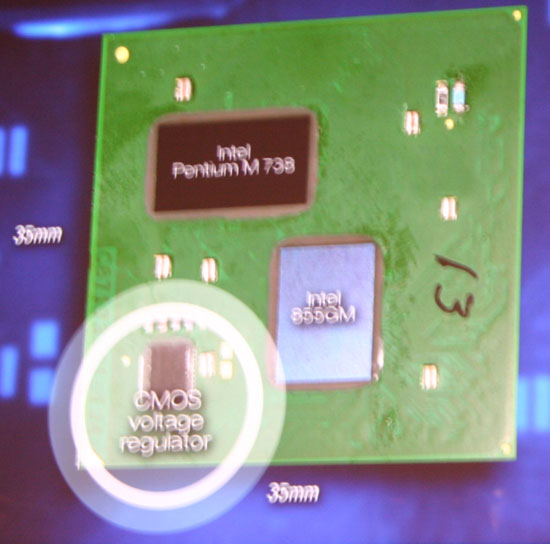
The benefits were two-fold: 1) Intel could manage fine grained voltage regulation with very fast transition times and 2) a tangible reduction in board component count.
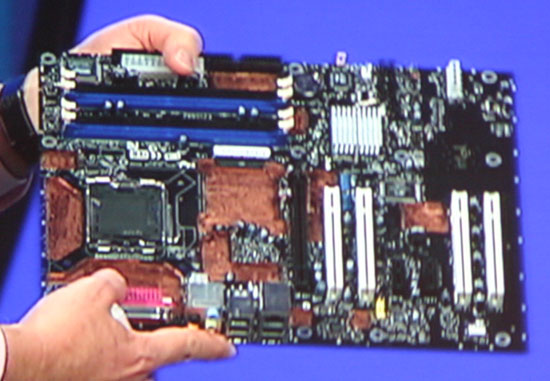
2005 - A prototype motherboard using the technology. Note the lack of voltage regulators on the motherboard and the missing GMCH (North Bridge) chip.
The second benefit is very easy to understand from a mobile perspective. Fewer components on a motherboard means smaller form factors and/or more room for other things (e.g. larger battery volume via a reduction in PCB size).
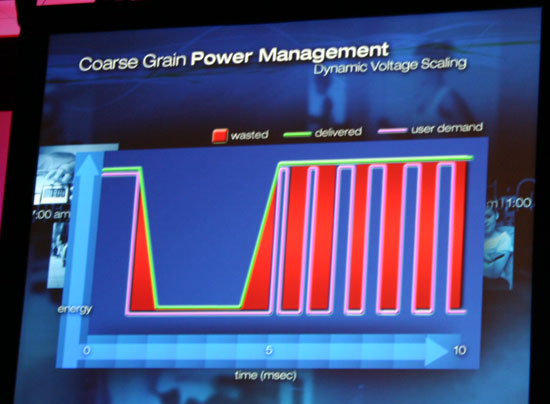

The first benefit made a lot of sense at the time when Intel introduced it, but it makes even more sense when you consider the most dramatic change to Haswell: support for S0ix active idle.


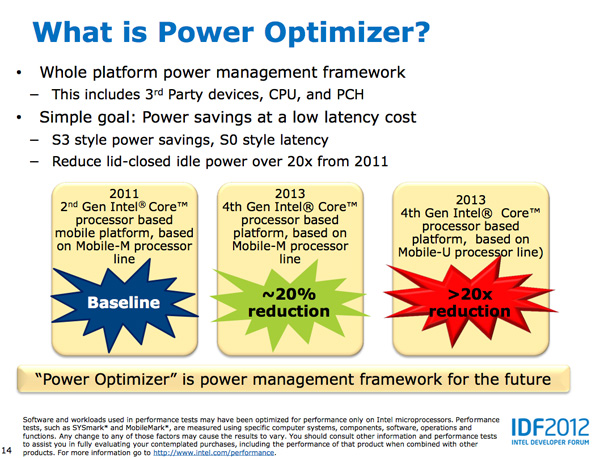
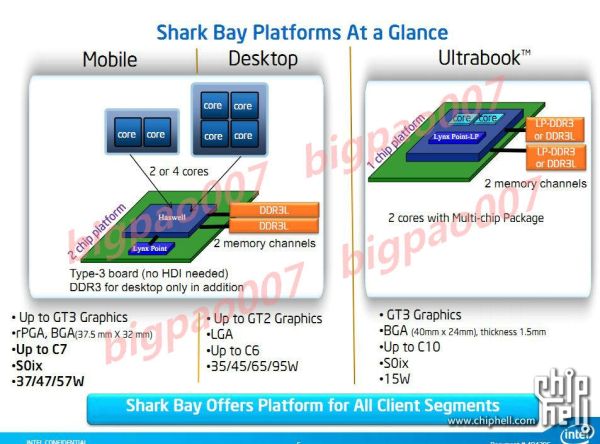








245 Comments
View All Comments
Magik_Breezy - Sunday, October 14, 2012 - link
Anything delivers "solid performance" on Facebook & iWorkWhy pay $2,000 for that?
random2 - Friday, October 5, 2012 - link
I agree. admittedly I am not an apple fan and view them as people who have undergone a degree of brainwashing compounded by the need for some to keep up with the Jone's. A certain degree of mind control must be necessary to stick with a company that has had some questionable business practices as far as customer relations, dealing with product issues and denying said issues, not to mention the whole hypocritical stance by apple in regards to copyright infringement has also left a bad taste in my mouth.hasseb64 - Saturday, October 6, 2012 - link
Disagree, not that much new from already published IDF reports almost 1 month ago. What is intresting is the claimed 40 EU GT3, other sources say lower amounts.JKflipflop98 - Saturday, October 6, 2012 - link
I totally agree. It's articles like this that have kept me coming back for years. Keep up the good work Anand!tipoo - Sunday, October 7, 2012 - link
"You can expect CPU performance to increase by around 5 - 15% at the same clock speed as Ivy Bridge. "That seems terribly disappointing for a tock, even IVB as a Tick managed 10% in most cases.
medi01 - Tuesday, October 9, 2012 - link
One can't be biased !@# !@#@ and a good journalist at the same time.One needs to be blind not to see how glass is always half empty for AMD, and half full for nVidia/Intel. F**!@#'s were shameless enough, to test 45W APU with 1000W PSU and such crap is all over the place.
Paulman - Friday, October 5, 2012 - link
As I was reading this article, about part way into the low platform power sections I suddenly had this thought: "Oh man, AMD is gonna die...!"I don't know if that's true for the entire microprocessor side of AMD, since they look like they're already starting to transition out of the desktop space, but I don't know if they're going to stand much of a chance if they're planning on entering the same TDP range as Haswell.
Do you think there's a chance AMD will start focussing on designing ARM ISA cores? Or will expanding on their x86 Bobcat-type cores be enough for them?
sean.crees - Friday, October 5, 2012 - link
I also worry about AMD. AMD has been 1-2 steps behind Intel for a while now, and now it seems Intel is at least 1 or 2 steps behind ARM and the future. Is that going to mean AMD is just too far behind to stay relevant now? If nothing else, i suppose AMD can fall back on graphic cards with it's ATI acquisition.Da W - Friday, October 5, 2012 - link
If Haswell keeps x86 relevant in the tablet space and thus Windows 8 has the upper edge over Windows RT and Windows tablets can grab +-50% market share from the iPad, then it can be good for AMD, provided they survive that long.RedemptionAD - Friday, October 5, 2012 - link
If AMD can create a team to focus on increasing IPC with a goal to one up Intel and have the ATI graphics people keep doing what they do with a time goal of say 2 years, (Note: Portables/Notebooks/Desktops should all be x64 by then), then I think that AMD will be able to return to their Athlon 64 glory days or better.